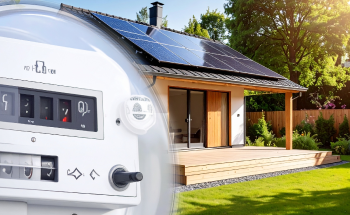All you need to know about DNP3 protocol – Features, protocol stack and communication architecture
Shwetha Bhat January 20, 2025
Shwetha Bhat January 20, 2025
DNP3 (Distributed Network Protocol) is a widely used communications protocol in the utility automation industry. It is particularly used for monitoring and controlling devices in electric and water utility substations.
DNP3 has been designed for reliable communication, especially over noisy and error-prone communication channels typical in utility environments. Using features like sequence numbering and error checking, it enhances data integrity.
DNP3 supports efficient data transmission by allowing selective acknowledgment of data. This reduces unnecessary retransmissions and optimizes bandwidth usage.
DNP3 includes mechanisms for time synchronization between devices, which is important for accurate event recording and synchronization in utility operations.
It defines a set of standard data objects that can be configured to represent various types of data such as analog values, digital statuses, counters, and control commands.
To allow critical information like alarms, control commands etc. to be handled with higher priority than non-critical data, data prioritization is an important feature of DNP3, ensuring timely and efficient operation.
The newer versions of DNP3 have added security enhancements which provide authentication, encryption, and integrity checks, safeguarding against cyber threats.
DNP3 promotes interoperability between devices from different manufacturers through standardized data formats and communication procedures.
DNP3 follows a layered protocol stack model like the OSI (Open Systems Interconnection) model but with specific layers tailored to utility automation needs:
It defines the physical medium over which communication occurs, such as RS-232, RS-485, Ethernet, or radio links. It specifies electrical and mechanical characteristics.
It provides error detection and correction mechanisms, framing, and addressing. DNP3 uses a link-layer protocol optimized for the characteristics of serial and SCADA communications.
It is responsible for reliable data transport, ensuring messages are delivered correctly and in sequence. It manages acknowledgments, retries, and flow control.
It defines the format and structure of DNP3 messages. It includes data objects (e.g., analog input, binary input) and functional codes (e.g., read, write, operate). The application layer is where data points and control commands are defined and exchanged between devices.
DNP3 communication typically involves a Master/Slave architecture:
DNP3 is extensively used in various applications including:

July 25, 2025
The world energy scene is being revolutionized by the fast-paced increase of decentralized renewable energy sources like rooftop solar, wind microturbines, and energy storage in batteries. batteries. The driving force…
Know More
July 25, 2025
Smart metering has evolved significantly over the last two decades as it became a building block of modern energy management solutions. At the core of the evolution is the DLMS/COSEM…
Know More
July 25, 2025
As the energy sector undergoes rapid digital transformation, smart metering has emerged as a foundational technology in modern utility networks. By enabling real-time monitoring, automated billing, and remote disconnection, smart…
Know More